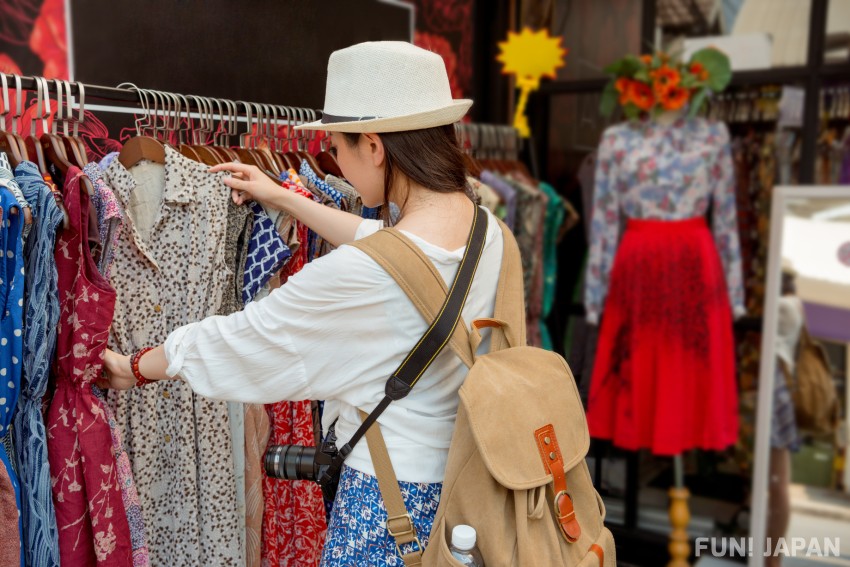
Riding on trends such as "SDGs" and "Ethical Fashion", vintage & secondhand clothing is attracting attention worldwide. Among them, high-quality Japanese vintage clothing is popular, and there are not a few tourists who go around vintage & secondhand clothing stores in search of their desired items.
In this article, we thoroughly explain the areas with many vintage & secondhand clothing stores scattered throughout Tokyo, including the trend-setting bases of Shibuya and Harajuku! Each town has its own characteristics and different market perceptions, so be sure to tour around while sightseeing and find your destined piece of clothing.
Shibuya - A town with many vintage & secondhand clothing stores, a trend-setting base, from individual stores to famous chain stores, a vintage clothing heaven
Shibuya, famous for its Scramble Crossing, is a hub of trendsetting. In the 90s, it was the birthplace of the Gal (Gyaru) culture and music known as "Shibuya-kei" (Shibuya-style), and has always been a city that creates trends.
Starting with SHIBUYA109, there are department stores and large commercial facilities such as Shibuya Hikarie, Scramble Square, Shibuya Parco, and Seibu Shibuya, as well as street-level stores of fashion brands and select shops. Furthermore, there are also traditional second-hand clothing stores scattered around the Jinnan area.
The Jinnan Area is a 5-minute walk from Shibuya Station. It's the area along the "Shibuya Park Street" heading towards Yoyogi Park from Shibuya Station along the JR line, which is also affectionately known by its nickname. In the vicinity, there are public institutions such as the Shibuya Ward Office and the Tower Records Shibuya store.
The entire area is dotted with chain stores like RAGTAG and long-established second-hand clothing stores alongside brand-name street-level stores. You can check everything from the latest trends to street fashion and unique high-brand items while strolling around.
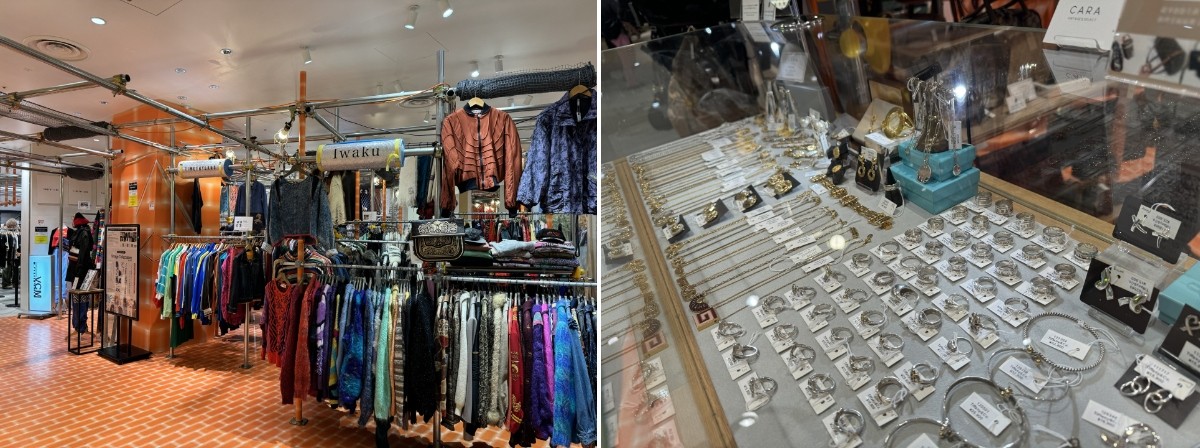
Also, Shibuya Parco houses the VCM MARKET BOOTH on the 4th floor, among other vintage & secondhand shops in various fashion buildings. The appeal is that you can choose items regardless of your favorite fashion taste.
However, the price range of the products is slightly higher compared to Shimokitazawa and Koenji, and it is not uncommon for non-branded items to be around 10,000 yen.
Access: Immediately on foot from Shibuya Station on the JR Line, Tokyo Metro, Tokyu Line, and Keio Inokashira Line
Harajuku/Omotesando - A town with many vintage & secondhand clothing stores where you can find different tastes of clothes on three streets

The Harajuku and Omotesando area has given birth to buzzwords related to unique Japanese fashion and culture, such as "Harajuku-style fashion" and "Kawaii culture".
Since the 1980s, this sacred place of fashion has created various booms such as ※DC brands, street fashion, and American casual. It is said that the reason why vintage & secondhand denim is now traded at high prices by collectors and used clothing merchants around the world is due to the second-hand clothing stores in Harajuku.
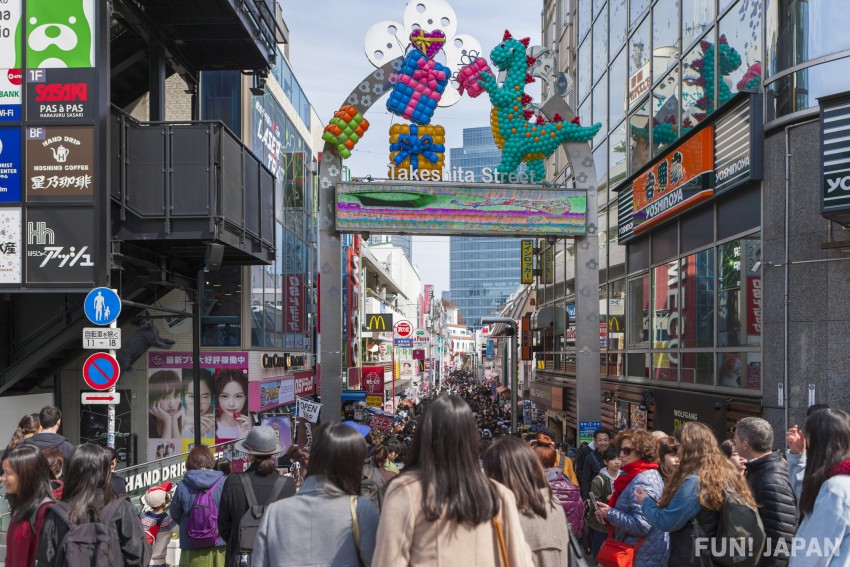
In particular, there are many vintage & secondhand clothing stores around "Takeshita Street", which extends about 400m from the Takeshita exit of JR Harajuku Station, "Cat Street" that connects Shibuya and Harajuku, and "Minami Aoyama Antique Street" about a 10-minute walk from Omotesando Station. However, the clientele and atmosphere of the vintage & secondhand clothing stores along these three streets are completely different.
For example, Takeshita Street has many students and tourists, and because there are many souvenir shops, affordable cosmetics, and miscellaneous goods stores, the unit price of vintage & secondhand clothes is also low, and there are many items that can be purchased for around 1000 to 2000 yen. Harajuku Chicago and KINJI are famous.
On the other hand, Cat Street is located in the "Ura-Harajuku" area, where brand street stores, select shops, and stylish cafes line up, and there are scattered vintage & secondhand clothing shops that are chain stores nationwide, such as RAGTAG and 2nd STREET, and individual vintage & secondhand clothing shops.
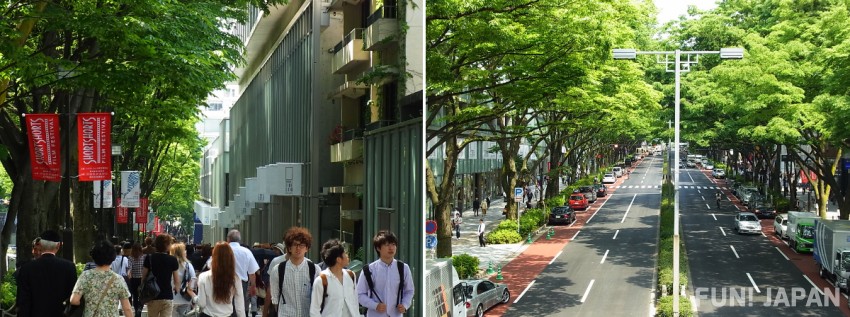
From the long-established second-hand clothing store BerBerJin, famous for its denim, to street fashion stores like Dog, which is visited by overseas artists incognito, to stores that only deal with European vintage & secondhand clothes and specialty stores for remade items, the variety is so diverse that it's fun just to window shop.
Lastly, Minami Aoyama Antique Street is a street that connects the "Minami Aoyama 5-chome intersection" on Aoyama Street and the "Takagicho intersection" on Roppongi Street in a straight line. It is a wealthy area with many high-brand stores and art spots such as the Taro Okamoto Memorial Museum and the Nezu Museum in the surrounding area. Therefore, the second-hand clothing shops in the area also deal with a lot of second-hand high-brand items and jewelry shops that handle watches and jewelry. Even if it's a second-hand item, buying a new item of clothing can cost the same amount or even more if it's an antique item!
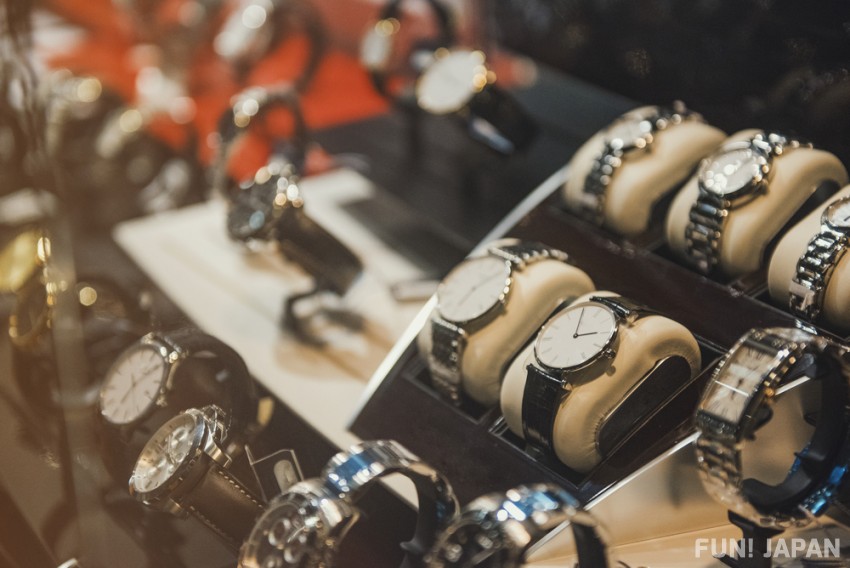
※DC stands for "Designers & Characters Brand", a Japanese-made English term. It is a general term for designer brands that have become popular in Japan, such as COMME des GARÇONS, ISSEI MIYAKE, Yohji Yamamoto.
Access: Immediately on foot from JR Yamanote Line Harajuku Station, Tokyo Metro Chiyoda Line and Fukutoshin Line Meiji-Jingumae Station, Tokyo Metro Ginza Line, Chiyoda Line, and Fukutoshin Line Omotesando Station
Shimokitazawa - A town full of thrift stores where you can find band T-shirts and stylish ultra-cheap clothes

Shimokitazawa, an area undergoing significant changes around the station. The Shimokita Senrogai (Railroad) Street, born from the development of the former railway site due to the undergrounding of the Setagaya-Daita Station from the Odakyu Line's Higashi-Kitazawa Station, and Mikan Shimokitazawa, which was born under the elevated Keio Inokashira Line, are among the notable spots popping up in front of the station, reigniting its popularity as a town for young people.
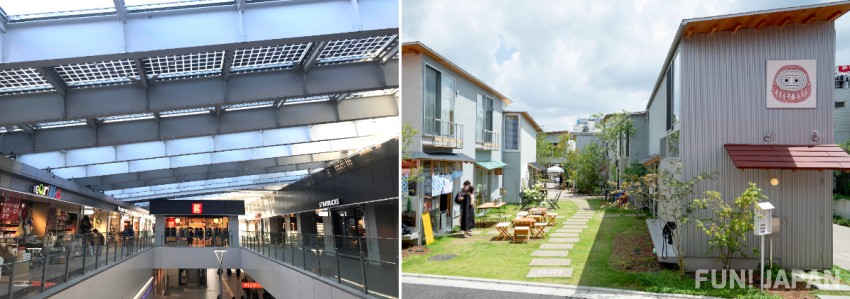
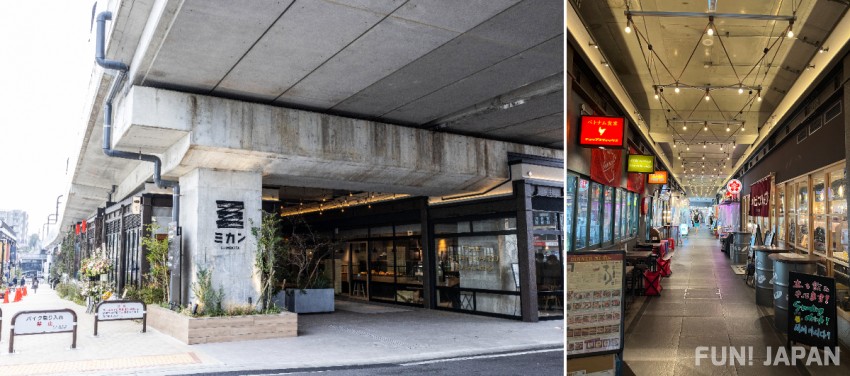
This area, famous for its subculture, theater, and music, is home to many cultural figures and musicians, and is dotted with stylish second-hand clothing stores.
However, unlike Shibuya and Harajuku, the area in front of the station is made up of six shopping streets, and many of the second-hand clothing stores are located within these shopping streets. This makes it easy to find good quality second-hand clothes at low prices. It's not uncommon to be able to buy clothes for less than 1000 yen per piece, and there are even super cheap shops like Stick Out that sell everything for a flat rate of 700 yen!

Perhaps due to the high number of musicians in the area, there are many stores that sell band T-shirts and military fashion. You might find unexpected treasures unique to Japan!
Access: Take the Odakyu Odawara Line from Shinjuku Station and get off at Shimokitazawa Station. Or, take the Keio Inokashira Line (bound for Kichijoji) from Shibuya Station and get off at Shimokitazawa Station.
Koenji - A town full of vintage & secondhand clothing stores! Enjoy a town full of unique items, gourmet food, and shopping streets
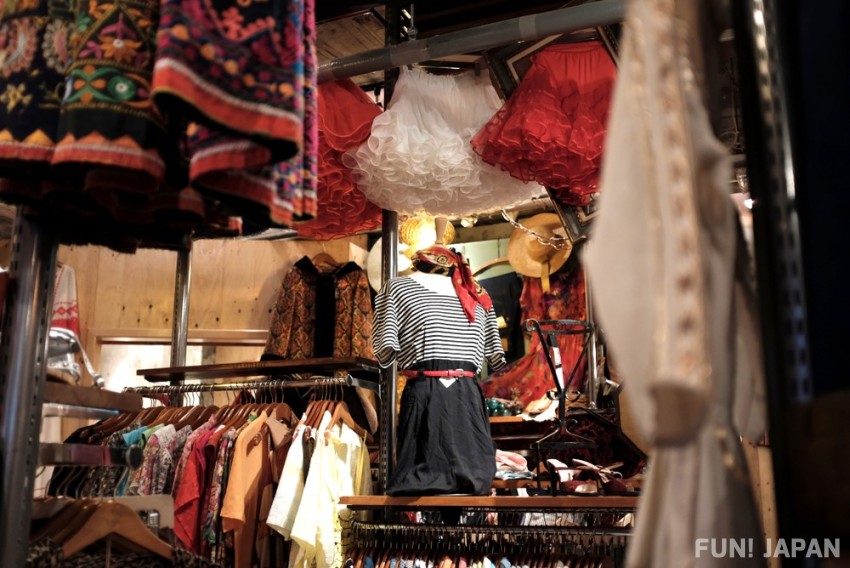
Koenji, a town along the JR Chuo Line, is a regular on Japan's "Most Desirable Towns to Live In" rankings. It stands out for its unique character, offering gourmet food such as ramen and curry rice, vintage & secondhand clothing, and is also known as the "Town of Awa Dance," hosting the Tokyo Koenji Awa Dance Festival every August, which attracts about 1.2 million people.
The north exit of the station leads to the old-fashioned Koenji Junjo Shopping Street, which has appeared in Haruki Murakami's novels. The south exit leads to the Pal Shopping Street and Look Shopping Street towards Shin-Koenji Station, where you can enjoy strolling through the shopping streets and casually shopping for vintage & secondhand clothes.
There are many shops in the shopping street that offer relatively low prices. However, if you step into a side street from the shopping street, you will find shops that specialize in brand vintage & secondhand items, one-of-a-kind antiques, and products from up-and-coming Japanese designers. Even among vintage & secondhand clothing stores, there are shops with a strong commitment, similar to select shops.The price range of clothes is not as low as in Shimokitazawa, where you can easily buy vintage & secondhand clothes for less than 1,000 yen, and some items cost more than 10,000 yen each.
Nowadays, "Koenji Vintage" has become a kind of brand, with famous international musicians like Lady Gaga visiting places such as Kitakore Building.
Access: Get off at Koenji Station after taking the JR Sobu Line for Mitaka or the Chuo Line Rapid for Takaosan from Shinjuku Station.
Ueno Ameyoko - A town with many vintage & secondhand shops! Rich in military wear! One of Japan's leading shopping spots, originating from black market.
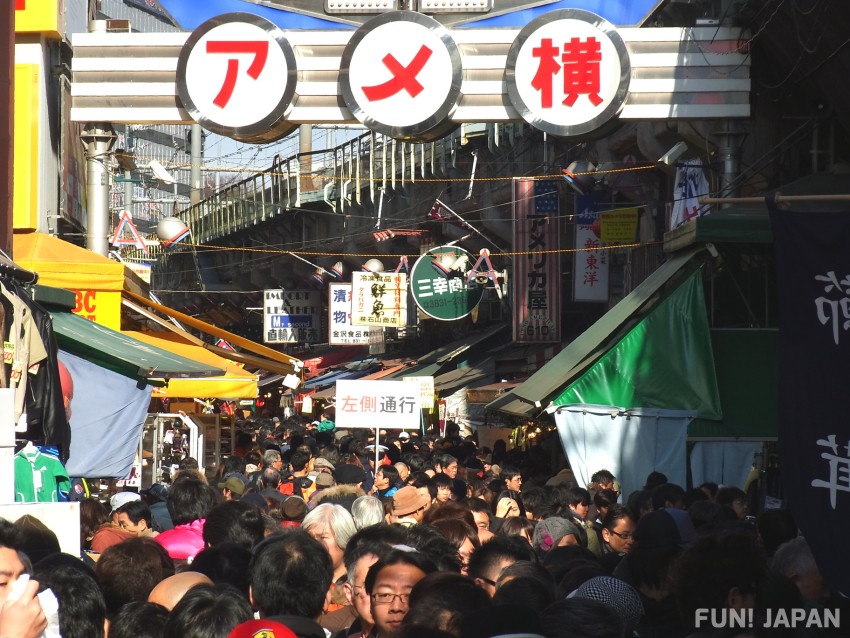
One of Japan's premier shopping spots, Ueno Ameya Yokocho Market, commonly known as "Ameyoko". Located in Ueno, a town filled with many tourist attractions such as museums and zoos, this approximately 500m street connecting JR Ueno Station and JR Okachimachi Station is lined with over 400 specialty stores.
When you think of Ameyoko, you might imagine stores selling food and condiments, strolling around eating fruits and sweets, and the lively calls and unique performances of the shopkeepers, such as "Put it in! Put it in! Put it in!" and "Here's an extra! One more!" that are part of the charm of the bargain sales.
However, Ameyoko originally started as a black market after World War II. There have always been many stores dealing with surplus goods from the U.S. military, such as combat uniforms, and even now, there are many shops like Nakata Shoten, a long-established store founded in 1956, that sell military goods and military wear.
From everyday vintage & secondhand items such as denim and flannel shirts to military wear like MA-1 and leather flight jackets, and even military goods that seem useful for camping and outdoor activities, the variety and uniqueness of the products are unique to Ameyoko! In the case of vintage & secondhand clothes, many stores are affordable where you can buy clothes for about 500 to 2000 yen, but the price range varies for military wear. Be careful as the price is completely different depending on whether it is a replica or a surplus item that soldiers actually used.
In addition, there are many shops for old tools and antique art, so be sure to enjoy a tour of used items when you visit Ameyoko.
Access: About 30 minutes by JR Yamanote Line from Shinjuku Station
Not just clothes! The "●● Town" of Tokyo
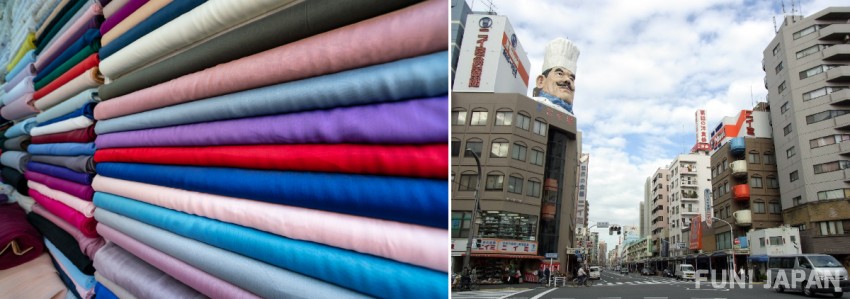
In Tokyo, there are many areas known as "the town of ●●" besides second-hand clothes. Use it as a reference when buying unique Japanese souvenirs!
Nippori, the town of fabric
The area around JR Yamanote Line's Nippori Station is a traditional wholesale district for textile products.
Just a 3-minute walk from the south exit of the station, Nippori Chuo-dori is known as "Nippori Textile Town", with about 90 fabric and weaving shops lined up. They sell all kinds of items related to clothing and handicrafts, including fabrics for both kimonos and western clothes, buttons, sewing tools, patterns, accessories, and more.
Access: About 20 minutes by JR Yamanote Line from Shinjuku Station
Kappabashi, the town of cooking utensils
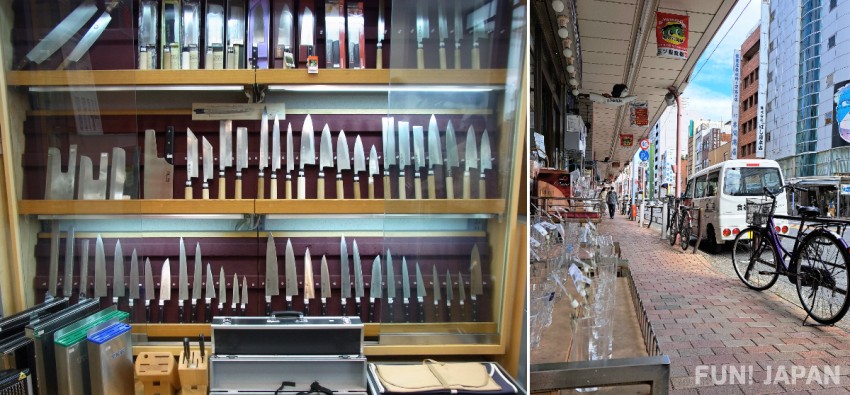
Kappabashi Dougu Street is a north-south shopping street of about 800m, located halfway between Asakusa and Ueno. It is accessible in about 5 minutes on foot from Tawaramachi Station on the Tokyo Metro Ginza Line or Asakusa Station on the Tsukuba Express, and is a town of cooking utensils that is visited not only by tourists who stop by in conjunction with Asakusa sightseeing such as Senso-ji Temple, but also by professional chefs from overseas during their visit to Japan.
In addition to everyday tableware and knives, there is a wide range of cooking utensils such as frying pans and pots, as well as confectionery supplies such as cake and cookie molds. The town is also fun for searching for souvenirs, with intricate food samples and lanterns with Japanese writing!
Access: 5 minutes on foot from Tawaramachi Station on the Tokyo Metro Ginza Line
Related Articles
- Tokyo's 3 Second-hand Book Towns: go there if you want to find a book that will be a memory of your life
- Recommended Shopping Spots in Kappabashi - KAPPABASHI STREET Part 1
- Recommended Shopping Spots in Kappabashi - KAPPABASHI STREET Part 2
- Trending eat-and-walk gourmet and specialties in Asakusa, Tokyo
- Ultimate guide to the recommended sightseeing spots in Ueno: from shopping to gourmet, parks, museums, art galleries, and more!
- A Complete Guide to Shibuya Station in Tokyo: From train routes, ticket gates, exits, to discount tickets
- 【Noteworthy Cafes in Tokyo!】Stylish cafes in the Shibuya and Harajuku area that can be used for lunch and tea time

Comments